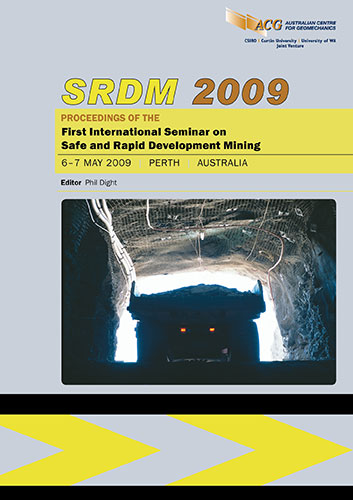Development rates in poor ground conditions

|
Authors: Parrott, TT; Price, S; Keall, PC |
DOI https://doi.org/10.36487/ACG_repo/902_20
Cite As:
Parrott, TT, Price, S & Keall, PC 2009, 'Development rates in poor ground conditions', in PM Dight (ed.), SRDM 2009: Proceedings of the First International Seminar on Safe and Rapid Development Mining, Australian Centre for Geomechanics, Perth, pp. 213-220, https://doi.org/10.36487/ACG_repo/902_20
Abstract:
Mechanised metalliferous mining occurs all over the world in many varied ground conditions. The Favona underground gold mine in Waihi, New Zealand is no exception with underground development and stoping occurring in ground conditions ranging from exceptionally poor to good. The poorer ground conditions present the greatest challenges from a ground support perspective, a development advancement rate and production perspective. This paper focuses on the challenges experienced and the solutions developed to ensure that acceptable development rates are maintained when poor ground conditions are experienced.
References:
Barton, N., Lien, R. and Lunde, J. (1974) Engineering classification of rock masses for the design of tunnel support,
Rock Mechanics, May, pp. 189–236.
© Copyright 2025, Australian Centre for Geomechanics (ACG), The University of Western Australia. All rights reserved.
View copyright/legal information
Please direct any queries or error reports to repository-acg@uwa.edu.au
View copyright/legal information
Please direct any queries or error reports to repository-acg@uwa.edu.au